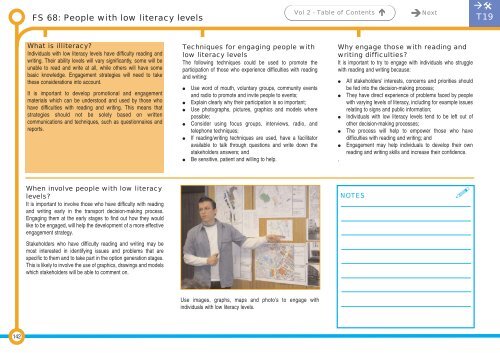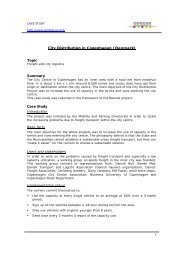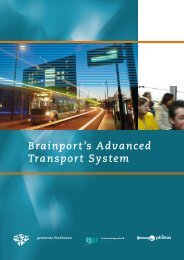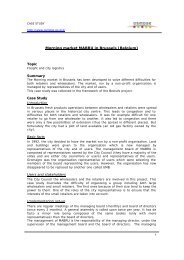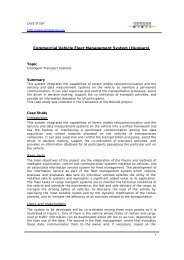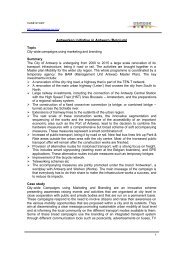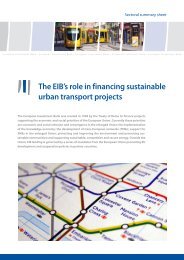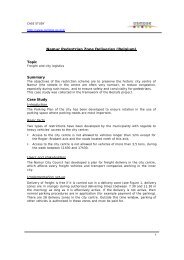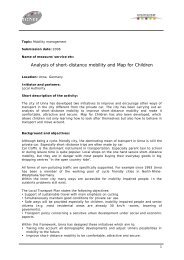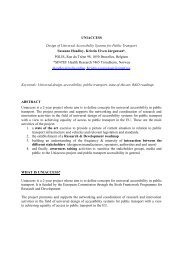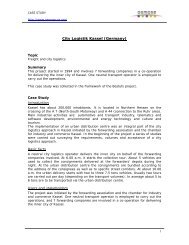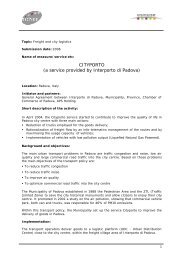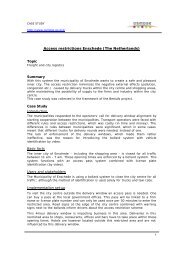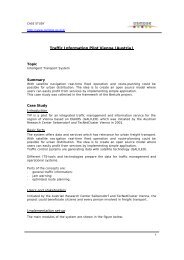Successful transport decision-making - Osmose
Successful transport decision-making - Osmose
Successful transport decision-making - Osmose
Create successful ePaper yourself
Turn your PDF publications into a flip-book with our unique Google optimized e-Paper software.
FS 68: People with low literacy levels<br />
Vol 2 - Table of Contents <br />
Next<br />
<br />
T19<br />
What is illiteracy?<br />
Individuals with low literacy levels have difficulty reading and<br />
writing. Their ability levels will vary significantly, some will be<br />
unable to read and write at all, while others will have some<br />
basic knowledge. Engagement strategies will need to take<br />
these considerations into account.<br />
It is important to develop promotional and engagement<br />
materials which can be understood and used by those who<br />
have difficulties with reading and writing. This means that<br />
strategies should not be solely based on written<br />
communications and techniques, such as questionnaires and<br />
reports.<br />
Techniques for engaging people with<br />
low literacy levels<br />
The following techniques could be used to promote the<br />
participation of those who experience difficulties with reading<br />
and writing:<br />
<br />
<br />
<br />
<br />
<br />
<br />
Use word of mouth, voluntary groups, community events<br />
and radio to promote and invite people to events;<br />
Explain clearly why their participation is so important;<br />
Use photographs, pictures, graphics and models where<br />
possible;<br />
Consider using focus groups, interviews, radio, and<br />
telephone techniques;<br />
If reading/writing techniques are used, have a facilitator<br />
available to talk through questions and write down the<br />
stakeholders answers; and<br />
Be sensitive, patient and willing to help.<br />
Why engage those with reading and<br />
writing difficulties?<br />
It is important to try to engage with individuals who struggle<br />
with reading and writing because:<br />
<br />
<br />
<br />
<br />
<br />
.<br />
All stakeholders’ interests, concerns and priorities should<br />
be fed into the <strong>decision</strong>-<strong>making</strong> process;<br />
They have direct experience of problems faced by people<br />
with varying levels of literacy, including for example issues<br />
relating to signs and public information;<br />
Individuals with low literacy levels tend to be left out of<br />
other <strong>decision</strong>-<strong>making</strong> processes;<br />
The process will help to empower those who have<br />
difficulties with reading and writing; and<br />
Engagement may help individuals to develop their own<br />
reading and writing skills and increase their confidence.<br />
When involve people with low literacy<br />
levels?<br />
It is important to involve those who have difficulty with reading<br />
and writing early in the <strong>transport</strong> <strong>decision</strong>-<strong>making</strong> process.<br />
Engaging them at the early stages to find out how they would<br />
like to be engaged, will help the development of a more effective<br />
engagement strategy.<br />
Stakeholders who have difficulty reading and writing may be<br />
most interested in identifying issues and problems that are<br />
specific to them and to take part in the option generation stages.<br />
This is likely to involve the use of graphics, drawings and models<br />
which stakeholders will be able to comment on.<br />
NOTES<br />
<br />
Use images, graphs, maps and photo’s to engage with<br />
individuals with low literacy levels.<br />
142


